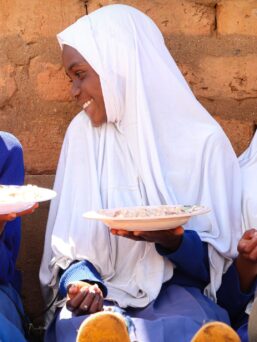Oxfam alongside its partner organizations has developed a resource pack on community-based protection (CBP) titled, ‘From Participation to Leadership.’ The goal of the resource is to provide guidance on the implementation of CBP across a full program cycle and to share experiences directly from protection organizations and members of community protection structures from organizations around the world.
The tools, case studies, and recommendations in this resource pack illustrate how power can be shifted from the formal humanitarian system towards communities, who are the experts on, and often the first responders to, their own protection needs; sentiments echoed by Results-Based Protection (RBP). RBP encourages the use of methods to continuously engage the affected population about steps to reduce risk and to ensure the response builds on community-based protection mechanisms and community-led solutions.
How was the resource pack developed?
The resource pack was developed through consultations with staff from various humanitarian organizations and community volunteers implementing community-based approaches to protection. These included 48 semi-structured interviews and 17 focus group discussions conducted in 15 different countries, Afghanistan, Bangladesh, the Democratic Republic of Congo, Syria, Uganda, Yemen, among others.

What kind of resources are featured in the pack?
The resource pack includes:
- Templates and suggested processes for different tasks within CBP that can be adapted to different contexts. For example, a template suggested is based on how to carry out community-based protection analysis. The template provides guidance on what protection analysis entails as well as a matrix to assists practitioners to carry out a detailed analysis of threats, vulnerabilities, and capacities, over time.
- Sample tools that are already used by practitioners from different organizations. A sample tool is the Terms of Reference (ToR) for Community Protection Volunteers (CPVs) which is based on Oxfam’s history and ongoing experience in Somalia/Somaliland. The ToR outlines the roles and responsibilities of CPVs as information channels and the selection criteria for hiring CPVs.
- Case studies on specific aspects of CBP shared by humanitarian staff and based on their experiences. For example, how Oxfam’s protection team supports community initiatives to ensure protection in Yemen. In this case study, Oxfam references its partnership with Creative People Solution Foundation (CPS), Al-Aidroos Association, and Ability Foundation to implement protection projects in five districts of Yemen from May 2018 to February 2019. The project aimed to strengthen the protection and psychosocial support capacities for women and young people, while strengthening social cohesion in their communities.
- Recommendations from humanitarian staff based on their current knowledge. For instance, in the resource pack, Oxfam highlights how it strengthened local humanitarian leadership in La Guajira, Colombia.
- A narrative overview of how the different resources fit into the programming cycle.
These tools promote effective protection practices which place the affected population at the center, acknowledging the importance of context and localized problem-solving.



